[ENG]
One time, while walking aimlessly around Rome, we came across a strange statue standing at the corner of the intersection just off Piazza Navona. The statue looked quite neglected or damaged from repeated touching because all the details of the face were completely destroyed. Next to the statue, there was a plate on which someone had pasted small pieces of paper with short inscriptions in Italian. At the time, I thought that it was some kind of a local community notice board, and the cards contain information such as: "a young couple will buy a flat in this area", "a math student will give tutoring and prepare for the final exams". I remembered this statue and decided that in the evening, after returning to the hostel, I would check what exactly it was, because it was clearly visible that the natives liked it.
After inquiring on the internet, it turned out that this statue was Pasquino - the most famous of the six speaking statues of Rome. Speaking statues in Rome is a tradition dating back to the 16th century, which consists in displaying anonymous cards with their political declarations, libels on figures of public life next to these six selected statues. These texts often took poetic, humorous forms and were something like modern billboards advertising political parties or programs.
Each of these six talking statues has a name and a history, and we managed to visit four of them:
[PL]
Jednego razu spacerując bez celu po Rzymie natknęliśmy się na dziwny posąg stojący na rogu skrzyżowania ulic tuż przy Piazza Navona. Posąg wyglądał na dość zaniedbany lub uszkodzony w skutek wielokrotnego dotykania bo wszystkie detale twarzy były kompletnie zniszczone. Obok posągu stała tabliczka na której ktoś poprzyklejał małe karteczki z krótkimi napisami w języku włoskim. Wówczas myślałem, że to jakaś swoista tablica ogłoszeń lokalnej społeczności, a na kartkach znajdują się informacje typu: „młode małżeństwo kupi mieszkanie w tej okolicy”, „studentka matematyki udzieli korepetycji, oraz przygotuje do matury”. Zapamiętałem sobie ten posąg i postanowiłem, że wieczorem, po powrocie do hostelu, sprawdzę co to dokładnie jest, bo wyraźnie było widać, że tubylcy darzą go sympatią.
Po zasięgnięciu informacji w intrenecie okazało się, że ten posąg to Pasquino – czyli najsłynniejszy z sześciu mówiących posągów Rzymu. Mówiące posągi w Rzymie to tradycja sięgająca XVI wieku która polega na wywieszaniu przy tych sześciu wybranych posągach anonimowych kartek z swoimi deklaracjami politycznymi, paszkwilami na postacie życia publicznego. Teksty te niejednokrotnie przybierały formy poetyckie, humorystyczne i były czymś na wzór współczesnych bilbordów reklamujących partie lub programy polityczne.
Każdy z tych sześciu mówiących posągów posiada swoją nazwę oraz historię, a nam udało się odwiedzić cztery spośród nich:
[ENG]
The most famous statue, which is a fragment of a larger work from the 3rd century BC. It depicts a warrior - possibly Menelaus, supporting the dying Patrokles. Other theories say it could also be Hercules fighting a centaur, or Ajax with a wounded Achilles. The sculpture is very damaged and its history is very long, so many theories have multiplied. It was here that the first lampoons attached to talking sculptures appeared, and this tradition was not supported by rulers, especially popes, for many years. The mocking rhymes were so annoying that ideas were raised to remove the uncomfortable talking statue. In 1522, Pope Adrian VI ordered the statue to be drowned in the Tiber, but the cardinals advising him explained to the pope that such action would only arouse even greater aversion among the Roman population. Sixtus V and Clement VIII also unsuccessfully tried to eliminate the speaking statue, and Pope Benedict XIII was so determined that he set up a guard in front of the statue to ensure that no one else would attach poems ridiculing the Pope to the statue. He also imposed a penalty for this type of criticism, and it was the most severe punishment, because the death penalty and history know cases of its execution precisely because of hanging a lampoon.
[PL]
Najsłynniejszy posąg, który jest fragmentem większego dzieła pochodzącego z III wieku przed Chrystusem. Przedstawia wojownika - prawdopodobnie Menelaosa, który podtrzymuje umierającego Patroklesa. Inne teorie mówią, że może to być również Herkules walczący z centaurem, lub Ajaks z rannym Achillesem. Rzeźba jest bardzo zniszczona, a jej historia bardzo długa, więc teorii namnożyło się bardzo wiele. To tutaj pojawiły się pierwsze paszkwile przypinane do mówiących rzeźb i tradycja ta przez wiele lat nie cieszyła się poparciem wśród rządzących, a zwłaszcza papieży. Prześmiewcze wierszyki tak bardzo irytowały że pojawiły się pomysły aby usunąć niewygodny mówiący posąg. W 1522 roku papież Hadrian VI kazał utopić posąg w Tybrze, jednak doradzający mu kardynałowie wytłumaczyli papieżowi, że takie działanie tylko wzbudziłoby jeszcze większa niechęć wśród ludności rzymskiej. Sykstus V i Klemens VIII również bezskutecznie próbowali wyeliminować mówiący posąg, a papież Benedykt XIII był zdeterminowany do tego stopnia, że przed posągiem ustawił straż, która miała pilnować aby nikt więcej nie przyczepiał do posągu wierszyków wyśmiewających się z papieża. Wyznaczył on również karę za tego typu akt krytyki, a była to kara najsurowsza, bo kara śmierci i historia zna przypadki wykonania jej właśnie z powodu wywieszenia paszkwili.
[ENG]
Among the talking statues there is one woman and it is Madama Lucrezia standing right next to the Venetian Palace. As in most cases, neither the author of the sculpture nor the exact origin of the statue is known, but it is assumed that Madama Lucrezia is a huge bust created in ancient times and most likely represents the goddess Isis or one of her priestesses.
[PL]
Wśród mówiących posągów znajduje się jedna kobieta i jest to Madama Lucrezia stojąca tuż przy pałacu Weneckim. Jak w większości przypadków ani autor rzeźby, ani dokładne pochodzenie posągu nie jest znane, jednak przypuszcza się, że Madama Lucrezia jest ogromnym popiersiem stworzonym w czasach antycznych i najprawdopodobniej przedstawia boginię Izydę albo jedną z jej kapłanek.
[ENG]
The tradition of attaching sticky notes to talking sculptures in ancient Rome developed to such an extent that talking sculptures began to talk to each other. A lampoon appeared on one statue, and a few days later, another statue replied to it. The most famous dialogues were held between Pasquino and Marforio, who now stands in the Capitoline Museums in the courtyard of Palazzo Nuovo. The sculpture most likely depicts Neptune, Oceanus or Tiber
[PL]
Tradycja przyczepiania karteczek do mówiących rzeźb w czasach dawnego Rzymu rozwinęła się do tego stopnia, że mówiące rzeźby zaczęły rozmawiać między sobą. Na jednym posągu pojawiał się paszkwil, a po kilku dniach na innym posągu pojawiała się odpowiedź na niego. Najsłynniejsze dialogi prowadzone były między Pasquino, a Marforio, który obecnie stoi w Muzeach Kapitolińskich na dziedzińcu Palazzo Nuovo. Rzeźba najprawdopodobniej przedstawia Neptuna, Okeanosa lub Tyber.
[ENG]
The next sculpture we visited is Facchino, depicting a man called acquarolo, i.e. a water carrier. It is the youngest of all speaking sculptures, as it dates back to 1580 and was originally located on the façade of the palace de Carolis Simonetti, but Pope Gregory XIII, as part of his fight against speaking sculptures, ordered it to be moved to a less exposed place, to the side wall of the palace.
[PL]
Kolejna odwiedzona przez nas rzeźba to Facchino, przedstawiająca mężczyznę zwanego acquarolo, czyli nosiwodę. Jest on najmłodszą z wszystkich mówiących rzeźb, bo wywodzi się z roku 1580 i pierwotnie znajdowała się na fasadzie pałacu de Carolis Simonetti, jednak papież Grzegorz XIII w ramach swojej walki z mówiącymi rzeźbami nakazał przeniesienie jej w mniej eksponowane miejsce, na boczną ścianę pałacu.
[ENG]
The last Talking sculpture we visited was the headless Abate Luigi. It comes from late antiquity and, as is most often the case with speaking sculptures, its author and the circumstances of its creation are unknown. It was found at the Vidoni Palace, where the Pompey Theater was previously located. The townspeople called him Abate Luigi, which means Abbot Luigi, because his stature resembled one of the abbots with this name, who lived in a nearby church.
[PL]
Ostatnia odwiedzoną przez nas Mówiącą rzeźbą był bezgłowy Abate Luigi. Pochodzi on z późnego antyku i jak najczęściej ma to miejsce w przypadku mówiących rzeźb jego autor ani okoliczności powstania nie są znane. Odnaleziono go przy pałacu Vidoni, gdzie wcześniej znajdował się Teatr Pompejusza. Mieszkańcy miasta nazwali go Abate Luigi co znaczy opat Luigi, bo po prostu swoja postura przypominał jednego z opatów o takim imieniu, który żył w pobliskim kościele.
[ENG]
There is another statue of Babuino, but unfortunately we did not manage to visit him. Maybe there will be an opportunity for your next visit to Rome.
[PL]
Jest jeszcze jeden posą Babuino, ale niestety nie udało nam się go odwiedzić. Może przy kolejnej wizycie w Rzymie będzie okazja.
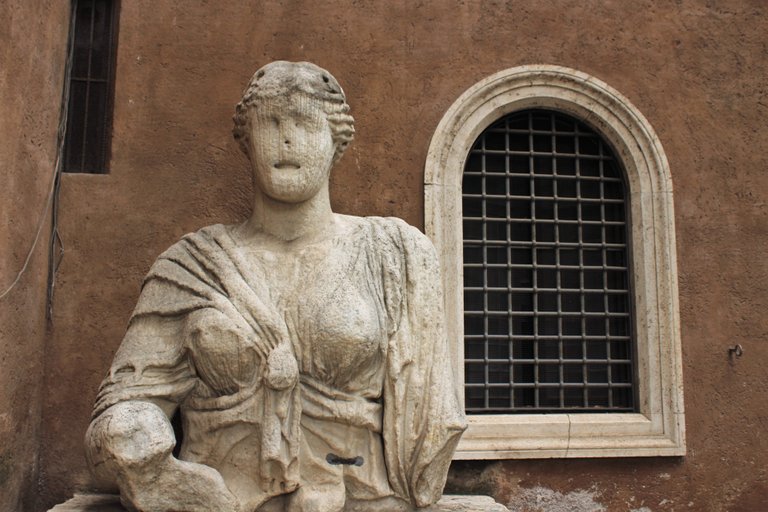
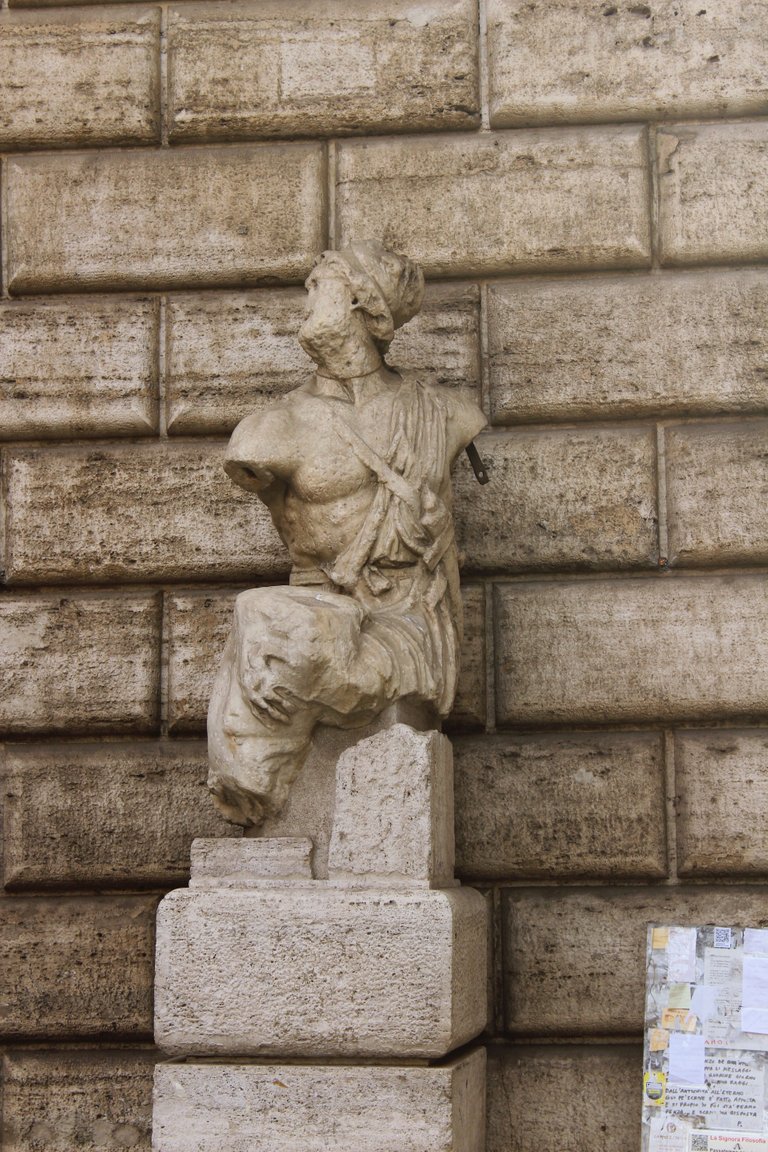

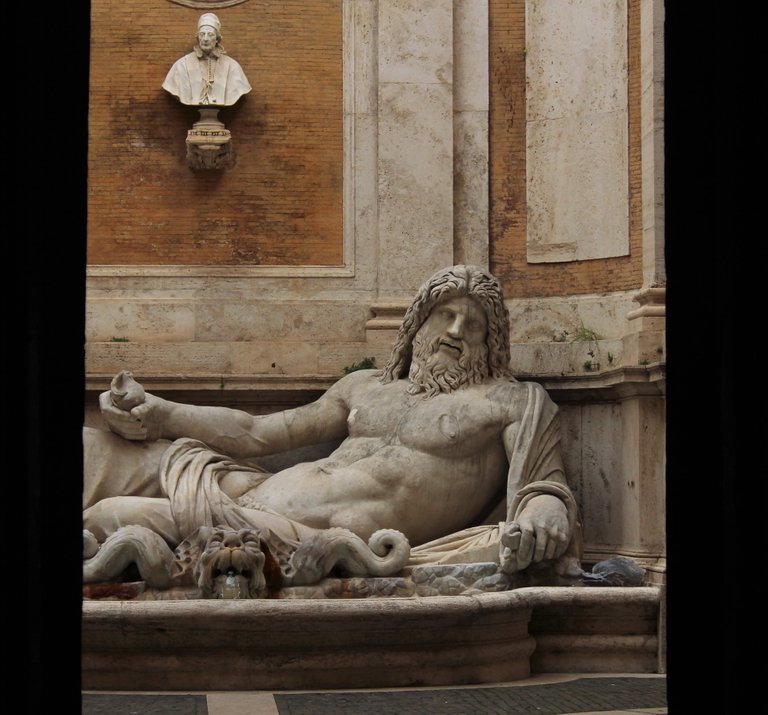
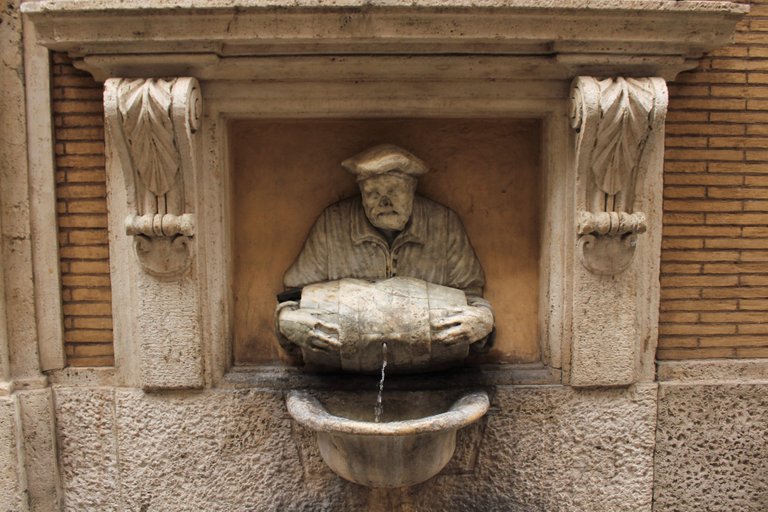
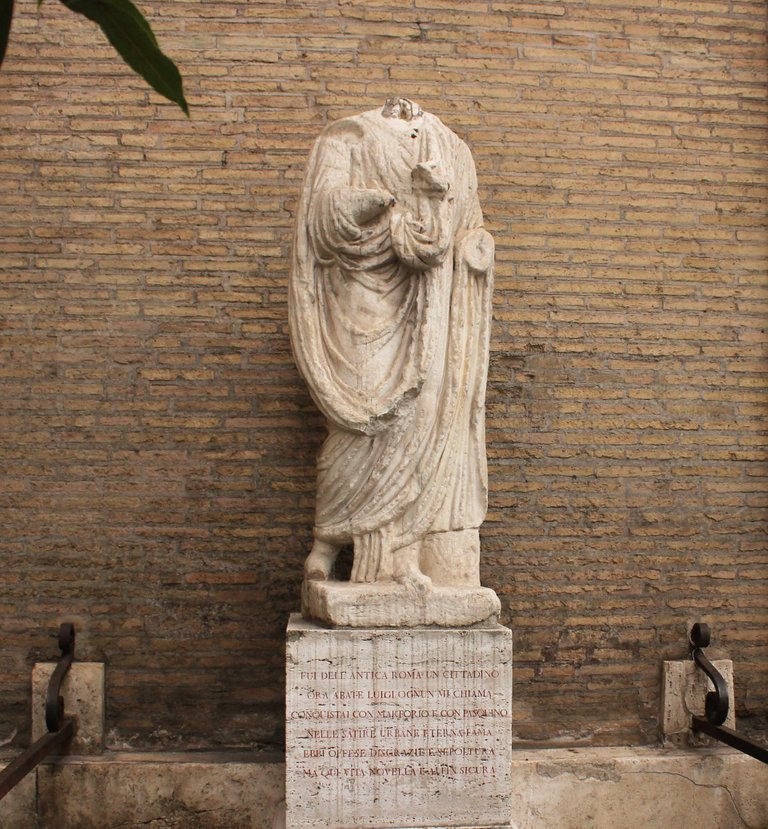
Congratulations, your post has been added to Pinmapple! 🎉🥳🍍
Did you know you have your own profile map?
And every post has their own map too!
Want to have your post on the map too?
PS: Have you joined our Discord yet? This is where over 1000 members of the TravelFeed come together to chat. Join us!